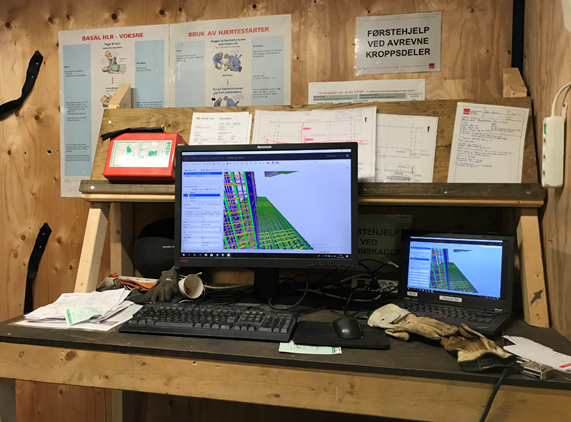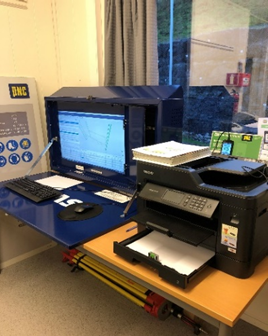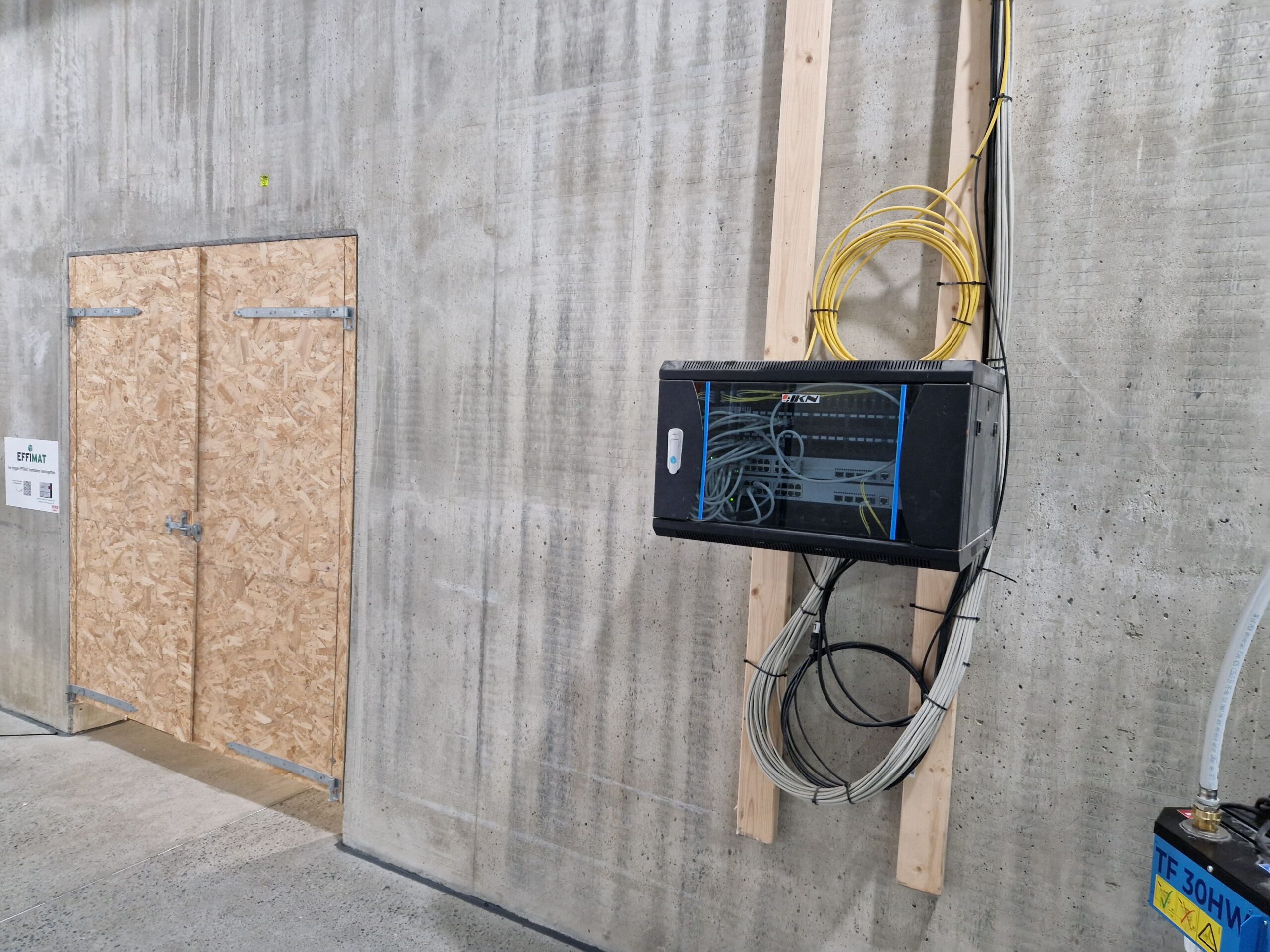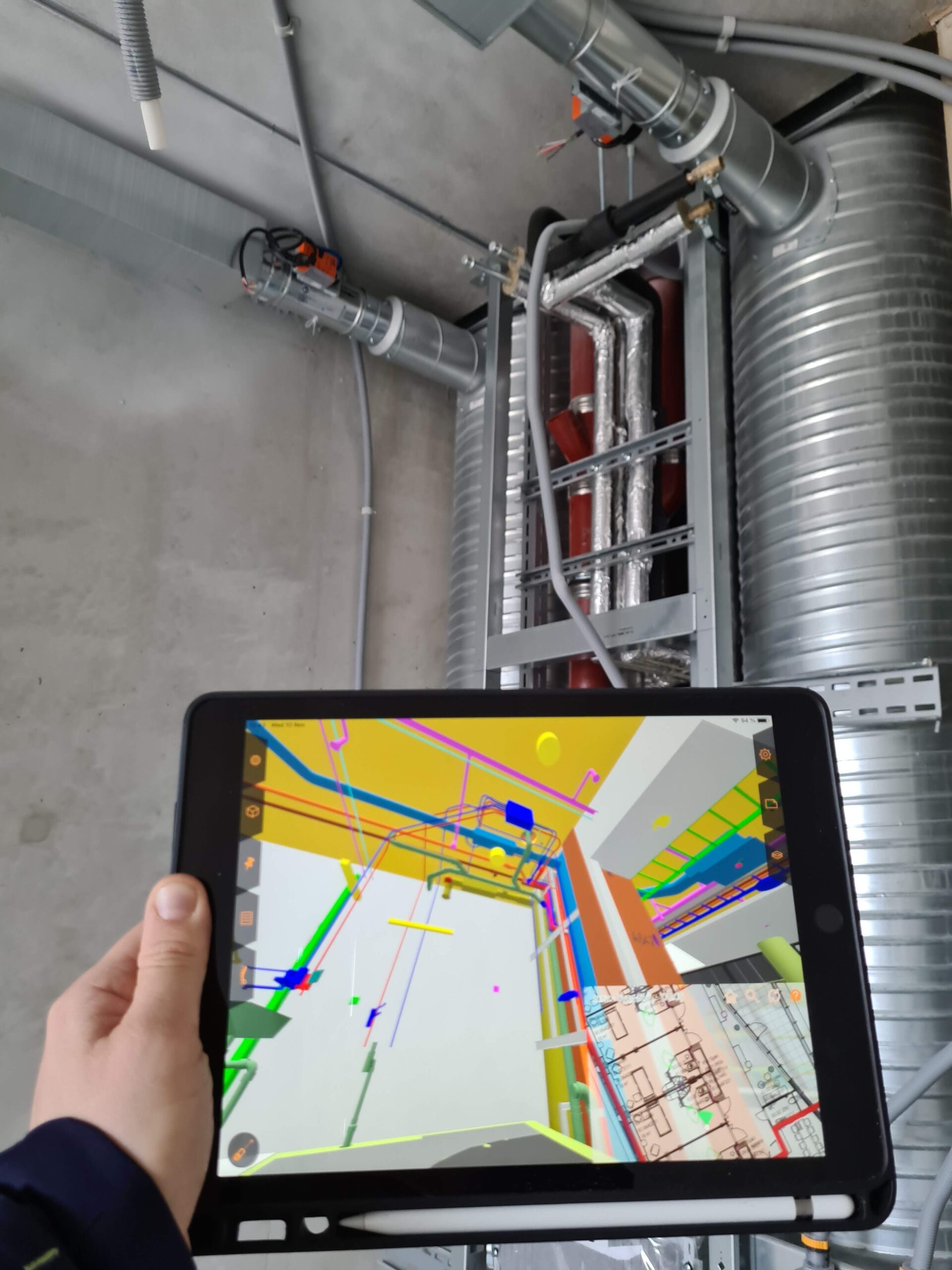And this is the overwhelming reality. Traditionally, on a construction site, the design is printed out on 2D drawings. Either they are delivered by the designers in larger formats or different “pieces” of design printed out in smaller formats. This was true in 1920 and this is true in 2020. However, with the progressing implementation of the BIM methodology in the construction industry, the method of using the construction documentation also changes.
More and more deliveries are done digitally and with that comes a need to view the design on the computer screen. Touch screen devices start to be something normal on-site. More tech-savvy foremen use DWG or PDF viewer on their phones or tablets to save themselves the necessity to run back and forth to the barracks.
In today’s entry, I want to cover exactly this piece of site technology that slowly is getting more popularity as digitalisation sweeps into construction.
Table of Contents
What is a BIM Station
BIM Station (or BIM Kiosk) is one of the answers to the digitalisation of the construction branch. It is a computer that stands on-site, available for workers to come by and swiftly check the design and not waste time running back and forth site office because a designer forgot to place a dimension on the drawing. Since the PC is to stand on a construction site, where it gets dusty, sometimes water pours, sparks fly and even objects fall, it mustn’t be a delicate aluminium Macbook, but something solid. That’s how BIM stations were created. It is a dust- and waterproof computer, in addition, clad in steel so that a falling object does not break it.
The amount of BIM kiosks available on-site depends on the type of the project and its development. You need fewer computers when you are just beginning with concrete work and much more when you are accomplishing interior work. It also depends on the type of project – different for construction where you have enclosed walls and for infrastructure that stretches for kilometres. At our hospital construction, we aim to maintain one BIM station per Control Area of interior works – this corresponds to roughly 1000 m2.
What is important
The main task of the BIM station is to allow to view the model, a drawing or any document placed on CDE. With that comes the possibility of comfortable dimension checking.
Additionally, it can also have storage for some smaller tools or it can even be a portable office for a site engineer. Sometimes, especially for concrete works, BIM Station is a small container that has both a computer, a printer and other tools.
They also must have pre-installed software for viewing the models. Typically it is something to view DWG drawings, a PDF viewer, an IFC viewer, and sometimes a Field BIM solution (such as StreamBIM, which I presented in one of my previous entries). Of course, access to a project CDE solution is also necessary here.
There is also one more, very important thing, that BIM stations should have.
An Internet connection
Imagine a weekly model update on a construction site without the Internet. The site manager downloads the updated models from CDE, rips them to a flash drive, hands it to the foreman who runs around the site and uploads the new models to each of the BIM stations and afterwards starts the IFC viewer. And so on every Monday. It doesn’t sound like a perfect process huh?
That’s why connecting BIM Stations to the web is so necessary. Thus, you can download new models directly to the BIM kiosk with each update delivery (frequency depends on the project need). You could even write a script that will fire up on Sunday night and download those updates automatically. Or, if you use an IFC viewer embedded in your CDE – you have always updated models available on-site.
Wi-Fi router
Having a wireless internet connection will make it possible to use tablets, to download and display the models, which can be more convenient than approaching a computer when you just have to quickly check something up. There is also increasingly more software capable of streaming the models and managing all documentation and drawings digitally. Including creating issues and Requests For Information (RFIs).
BIM stations set-up
The correct set-up of BIM kiosks is essential. Especially automatic processes and the ease of access to each of them. We aim for better quality and easier construction without the necessity for manual maintenance.
I want to present to you some of the assumptions and set-ups we have made on New Stavanger University Hospital, a project I am currently working on (more about my role). Clearly, it is also possible to use BIM stations on infrastructure projects, especially for engineering constructions such as bridges. It is more challenging to set it up (especially the internet connection) since the project is far more stretched.
Automation
The main task of BIM kiosk automation is to provide the actual construction design. In our case – an updated Solibri model is every Monday.
We handle it via Power Shell script that connects the BIM Station to our CDE and downloads Solibri models for the building the station is placed in. Also, it creates a copy of the last week’s export, so that in case the new model is corrupted or contains major errors, the workers can still do their job. Believe me, this saved us many times. Afterwards, the machine restarts itself and opens Solibri with the correct building model.
In the end, the machine sends an e-mail to the BIM Manager with the performed steps. In such a manner, we can monitor if everything works correctly. And unfortunately, there happens rust in machinery from time to time.
This script runs every Sunday night so that every Monday morning workers can begin to work with freshly updated models and the BIM Manager can check if every BIM station was updated correctly. In case of errors, we access the kiosk that failed and manually perform updates or just open the backup model.
Remote access
BIM station coordinates
Workers might sometimes get lost while browsing the models. To allow them to quickly find themselves we created an “issue” in each model viewer that shows the exact location of the BIM station on site. Hence, when anybody needs it, he can click on the issue which opens the 3D view with the placing of the the BIM kiosk.
You can go even a step further – creating a unique web link for each issue allows for embedding this link into a QR code. You can print it out and stick it on the BIM station. It is helpful, especially for foremen or site managers who check the quality of work or see some issue just by passing by – they can scan the QR code and quickly find themselves in the model thus creating an issue in the system much faster.
Should I invest in BIM Stations?
In the end, are the BIM Stations worth investing in? I refrain from giving you a direct answer. But you have the arguments.
First of all, it depends on the digitalization stage of your project. Do you use CDE in the cloud? Do you use drawings or models? Both? How big is your project? Does walking back to the office take a considerable amount of time?
A few years ago to the branch came a novum – a so-called model-based building, referred also as a drawingless building. This is a construction site that does not use any 2D drawings. The only basis for construction is BIM models. In such a project I reckon, the BIM Stations are a must, because they are the only possibility to view the building design in the form of BIM models.
No doubt, that introducing BIM Station to your construction site is a substantial cost. Especially since it is not limited to only the BIM kiosk price tag, but you should also connect it to the internet. That comes with additional expenses – either setting up a provisory internet connection on-site or the cost of mobile internet (which is also significant given the amount of data downloaded each week).
The other possible solution is to set up only a Wi-Fi on-site to allow for the use of tablets and connection to CDE and Field BIM solutions in real-time.
As always – there are pros, cons and costs and you should decide for yourself what is best for your project.
If you want to know more, about a Model-based construction site, you are welcome to read our Case Study. We discuss not only BIM stations but also plenty of other prerequisites! Available in this link.













